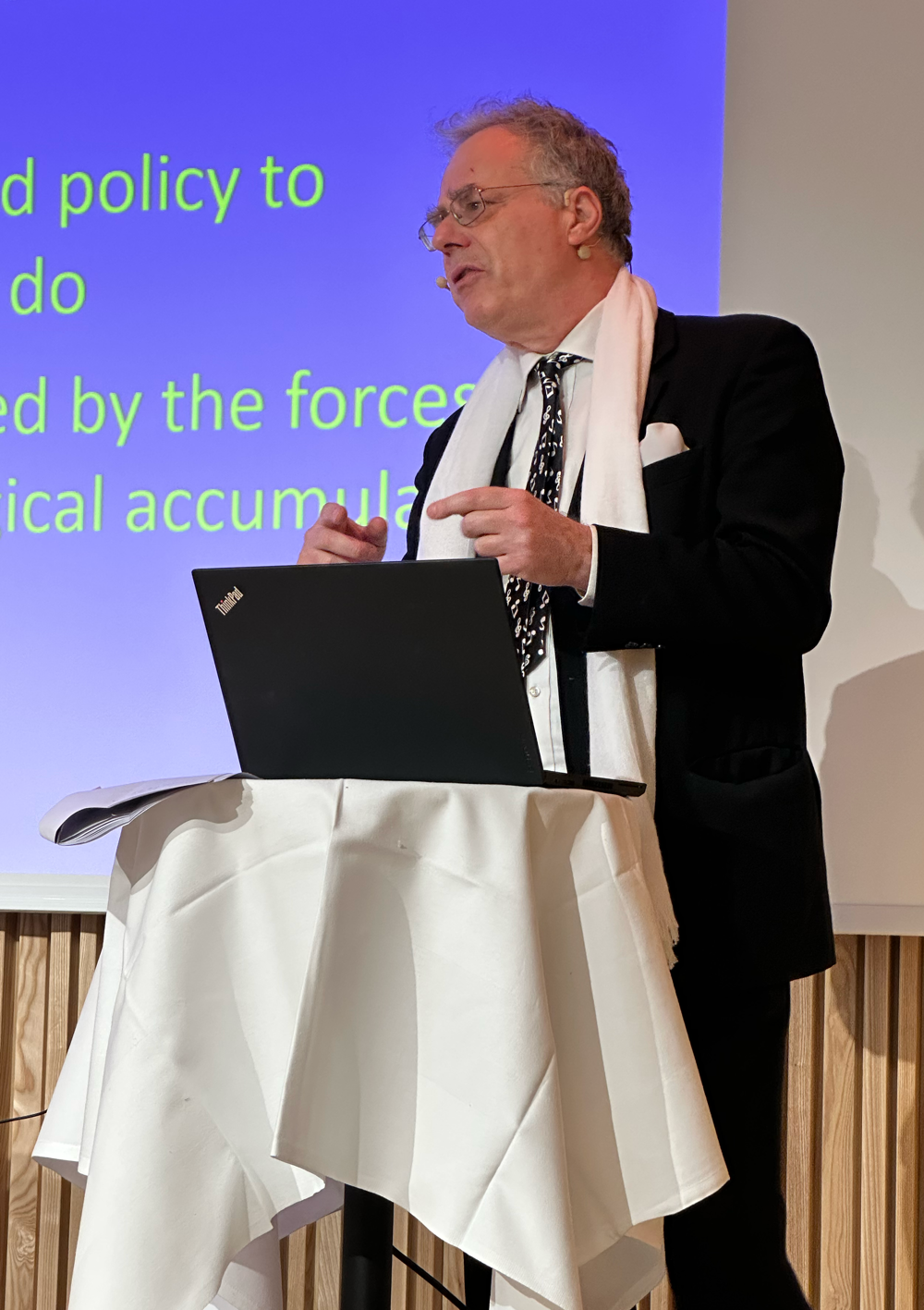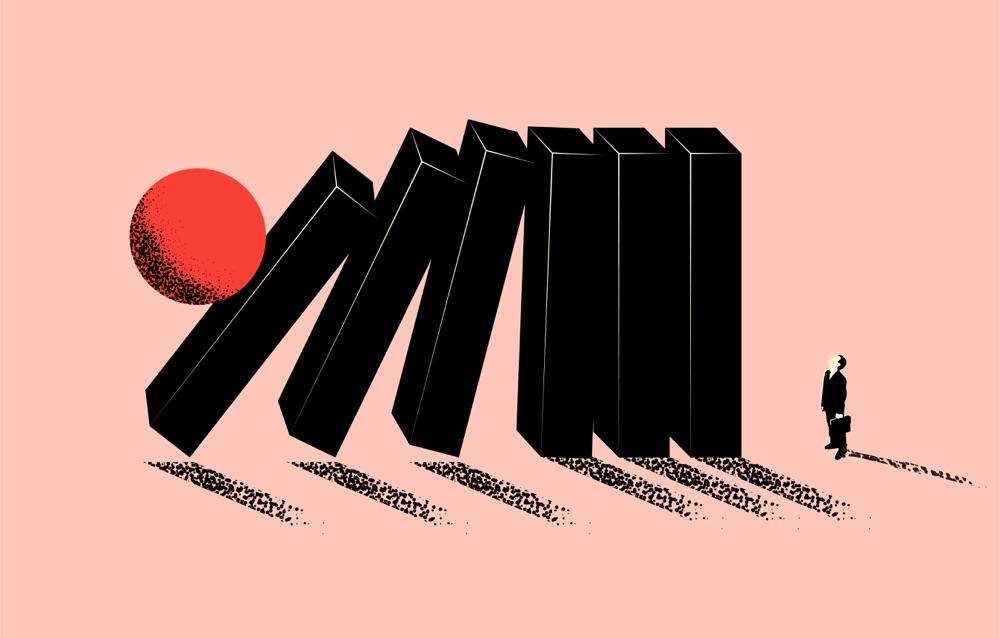In this article, the economist Mark Knell surveys key ideas on the relationship between innovation and R&D (research and development) during these crises, emphasizing structural aspects of these activities.
Mark Knell, Research Professor, NIFU
The 2007–2008 financial crisis led to the most serious contraction of the global economy since the Great Depression. Innovation, technology, and structural change has received little attention in the analysis of crisis.
The most innovative analysis originates in a book by Archibugi and Filippetti (2012), and a series of related papers by Archibugi, Filippetti, and Frenz. These authors found that the recovery from the 2007–2008 financial
crisis resulted in firms reducing their spending on innovation, but their responses varied across different types of firms.
Recessions and turmoil have led to several breakthrough innovations. This suggests that a simultaneous existence of both creative destruction and creative accumulation lies underneath the crises. The financial crisis thus created significant uncertainty on both supply and demand sides of the economy, which often promotes risky investments.
A confluence of crises
A confluence of crises is occurring right now. The global economic crisis, the Russian- Ukranian war, inflation, food shortages, unwinding asset bubbles, debt crises in developing countries, and lingering effects of COVID-19-related shutdowns and supply chain bottlenecks are all contributing to increasing uncertainty and conflict.
While there are certain similarities between the 2007–2008 financial crisis and the current confluence of crises, there are some especially important differences.
They are both located within the digital revolution (or fifth technological revolution), but the role that structural and supply side factors play in the economy are vastly different. Indeed, supply chain bottlenecks are adding to the uncertainty and conflict in a big way.
Creative destruction
From his early contributions to business cycle theory and economic crisis, Schumpeter sought to understand the fundamental causes of economic fluctuations.
He believed that innovations often appear in close geographic proximity to other innovations, appearing discontinuously in groups or swarms. This led to considerable structural transformation, which Schumpeter
referred to as the “perennial gale of creative destruction”.
Schumpeter’s creative destruction model has proved to be an immensely powerful argument among scholars. The idea originally appears in the Theory of Economic Development (1911) in the context of the competitive model, where entrepreneurs and small firms introduce radical innovations. Capitalism, Socialism, and Democracy (1942) emphasizes large oligopolistic firms with their broad competences and organizational structures capable of handling major technological changes.
In Archibugi’s view, competitive market structures produce creative destruction, while oligopolies produce creative accumulation.

The cyclical nature of R&D investments
There has been considerable controversy surrounding the cyclical nature of R&D investments and innovative activities. Aggregate growth models suggest that long-run growth is procyclical.
The evolution of gross expenditures on R&D (GERD) and business R&D activity (BERD) over time tends to be procyclical with gross domestic product (GDP) and aggregate business gross fixed investment (GFI). BERD has the highest level of cyclical volatility (measured as standard deviation), followed by GERD and GDP. Empirical evidence from the OECD countries confirms this trend.
By contrast, Neo-Schumpeterian growthmodels predict R&D activity to be countercyclical. Schumpeter suggested that during recessionary times, firms shift resources away from production activities and toward productivity-enhancing activities, such as learning activities and the reorganization of work.
This is because the opportunity costs during a recession are lower than during a boom and that cyclical downturns have a cleansing effect, resembling that of creative destruction.
Barlevy (2007) developed a novel idea that attempts reconcile the opportunity cost hypothesis with procyclical R&D activity. R&D cycles can be procyclical, and productivity-enhancing activities can be countercyclical, as downturns provide incentives to reorganize and reallocate resources. While product innovation tends to decline in recessions, both process and organizational innovation may increase as firms upgrade their technology.
Aghion (2012) suggests that short-term investments should be procyclical, whereas long-term investments should be countercyclical. However, credit market imperfections may prevent firms from reorganizing and innovating during crisis. If firms face tighter credit constraints, R&D investment becomes procyclical.
Archibugi (2013) found that a small, but significant minority of firms are spending more on innovation during the economic downturn. These firms are the most dynamic ones, frequently upgrading their technology and innovating continuously, or they are new innovators taking advantage of the crisis. Crises would be characterized by creative destruction, while regular times would be characterized by creative accumulation.
R&D and innovation
Schumpeter was aware that innovation differs from R&D activities, as shown by data from the annual EU Survey on Industrial R&D Investment, biannual EU Community Innovation Survey and other register data sources including Compustat.
Drawing on surveys of establishments and enterprises, scholars study the economic impact of financial (or Covid-19) crisis. Innovation and R&D studies focus on the identification of various innovation output indicators (product, process, organization, marketing, new products to the firm, and new products to the market).
A bourgeoning literature on the impacts of the financial crisis on R&D and innovation finds considerable heterogeneity in the behaviours and technological diversity of countries, sectors, firms, and innovation strategies.
A firm might identify the milieus that make them more likely to persist in innovation or countercyclical innovation, and evaluate how recessions and crises affect the behaviour, performance, and capabilities of firms that innovate after a recession or crisis. When a company faces a downturn, it may choose to cut innovation activities to save money, or it may pursue and even speed up the plan.
At the industry level, there was only modest decline in the high-tech and low-tech industries, while the medium-tech sector, such as the automotive industry, experienced a deeper decline. R&D activity and innovation in services were less affected than in manufacturing.
In the UK, the crisis led to higher innovation expenditures in fast-growing new entrants and firms with marketing innovations before the crisis. The innovation strategies of firms also varied significantly during the crisis, with 34 per cent of German firms followed a countercyclical strategy. In Switzerland, 42 per cent of firms with R&D activities behave procyclically, 17 per cent behave anti-cyclically, and 40 per cent do not display systematic cyclical behaviour.
Is the COVID-19 crisis related to the 2007–2008 financial crisis? Both caused significant decline (collapse) and volatility (uncertainty) in the global financial markets, the former ignited by internal collapses of banking systems, and the latter by prevailing health threats. As Mark Twain once wrote, “history never repeats itself, but it rhymes».
This article is partly based on the RelinC project, see the article: “Pandemiens følger for innovasjon i norsk næringsliv”

